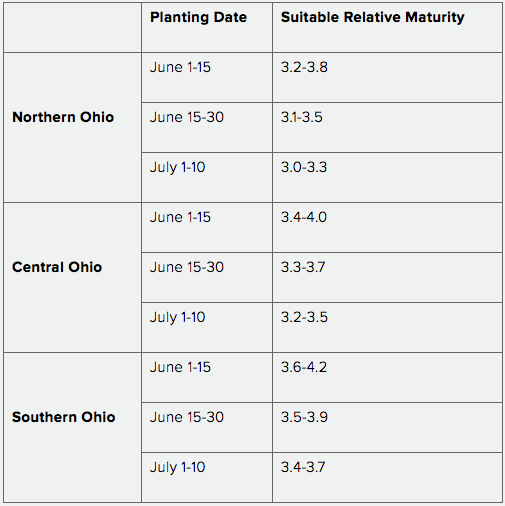Small grain harvest will soon be underway. For profitable double crop soybean production, there must be adequate time for the production of the soybean crop and soil moisture. Double crop soybean management differs from traditional, full-season soybean management, says Laura Lindsey.
Relative Maturity
Relative maturity has little effect on yield when soybeans are planted during the first three weeks of May. However, the effect of relative maturity can be larger for later planting dates.
When planting double crop soybean, the latest maturing variety that will reach physiological maturity before the first killing frost is recommended, says the Ohio State University extension researcher. This is to allow the soybean plants to grow vegetatively as long as possible to produce nodes where pods can form before vegetative growth is slowed due to flowering and pod formation.

Recommended relative maturity ranges for soybean varieties planted in June and July in northern, central, and southern Ohio.
Row Spacing
Double crop soybeans should be produced in narrow rows- 7.5 or 15-inch row spacing. The later in the growing season soybeans are planted, the greater the yield increase due to narrow rows. Soybeans grown in narrow rows produce more grain because they capture more sunlight energy, which drives photosynthesis.
Seeding Rate
Harvest population for mid- to late June plantings should be between 130,000-150,000 plants/acre. Harvest population for early July plantings should be greater than 180,000 plants/acre.
Harvest plant population is a function of seeding rate, quality of the planter operation, and seed germination percentage and depends on such things as soil moisture conditions, seed-soil contact, and disease pressure.
In our double crop soybean trials planted in June 2017, 250,000 seeds/acre was required to achieve a harvest population of 143,200 plants/acre due to excessive rainfall after planting. In July 2016, 213,000 seeds/acre was required to achieve a harvest population of 204,000 plants/acre.






Post a comment
Report Abusive Comment